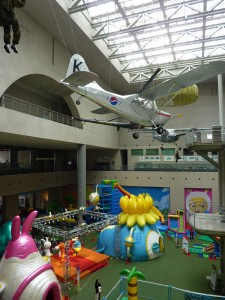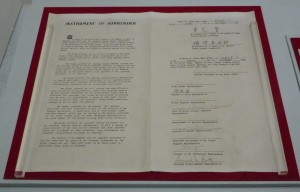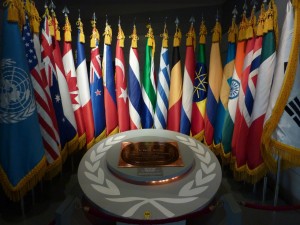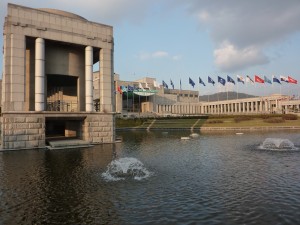November 1st, 2009.
This entry has taken a long time to publish. This is not because it is some great feat of literature, it is because I am no great blogger, and can rarely be bothered to upload two things that I managed to (mostly) write in consecutive days. On with the tale…
After yesterday’s trip to the DMZ, someone mentioned that the War Museum in Seoul was quite good, so my plan for the day was to arrive in Seoul Station and walk south to spend an hour or so there before walking back up past the station to Insa-dong and Palace district. I hadn’t read up anything on the museum beforehand – the Rough Guide has its location on the overview map of Seoul, but it isn’t mentioned in the index, and I couldn’t find anything in the city’s chapter in the book.

I arrived at the museum complex from the rear, which turned out to be fortunate, but I’ll explain why later. The first building I came across was the Museum Wedding Hall. Odd, but perhaps there’s some play on unification there. Next, I climbed the steps and was confronted with tablet after tablet of the names of US fallen. 33,642 US soldiers were killed in action in the Korean War, and all of their names are listed, state by state, on bronze plates. Towards one end of the hall are the plates with other nationalities, including 1,042 British, 724 Turkish and 516 Canadians. These are all outnumbered by the stone plaques listing the Korean dead from the war and other conflicts. 170,585 names in small gold letters carved into polished black stone.




Moving on from the Korean War, the museum describes the wars that have made up the history of the Korean peninsula, from the days of the Three Kingdoms, starting in 67 B.C. and continuing to the 7th Century A.D. They all have plenty of accompanying exhibits that would fascinate anyone interested in military history, from swords with constellations carved into the blade, through “cannon arrows” to parts of the “Tripitaka Koreana.” About this point I’d noted down “Excellent museum!” in my notebook.

The exhibits go on to tell the story of Republic of Korea’s involvement in the Vietnam War, before finishing off, as I thought, with displays to mark the UN roles that the ROK (Republic of Korea) forces have participated in. I thought that was a fitting end the museum, then I realised I hadn’t finished yet. As I walked around in an increasing state of bewilderment I came across a shooting rage with air rifles (I was a bit dazed, so I politely refused), models of Little Boy and Fat Man (the atomic bombs dropped on Japan), a reconstruction of some of the superstructure of a naval ship, and when I looked out of the window from the cafe on the third floor, I saw a huge array of military hardware outside – landing craft, helicopters, artillery, and a variety of aircraft from propeller-driven trainers through to a B-52 Stratofortress.


At this point I was feeling very disorientated. The museum had moved from being a fitting and sober memorial of the war to a show of military strength, then I remembered the Korean War is not over. There has been a ceasefire in operation since 1953, but the war is still ongoing and each side needs to demonstrate to the other how strong they are, but also perhaps to reassure their citizens that should the ceasefire fail, you will be safe, defended by the might of ROK armed forces.

Past most of the display of military hardware, and back toward the main entrance to the memorial that would have shown me what I was in for had I not decided to enter from the side door, are a number of statues and memorials including the Statue of Brothers, symbolising the division of Korea.

I didn’t get to the palace district until after sunset.
